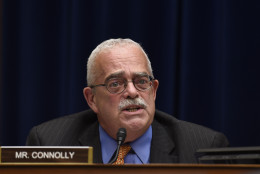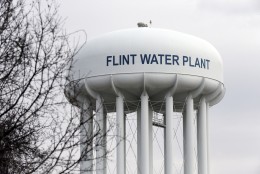Environmental Protection Agency
-
House Oversight and Government Reform Committee Ranking Member Elijah Cummings (D-Md.) said recent agency communications memos violate the Whistleblower Protection Enhancement Act, (WPEA) because they do not include a mandatory statement explaining that federal employee communications with inspectors general or members of Congress are protected.
January 26, 2017 -
Initial shock and online backlash after a handful of federal agencies were handed down communication directives has given way to backtracking and also encouragement for federal employees to stand up for open government and whistleblowing.
January 25, 2017 -
The government's top ethics official says President Trump still hasn't provided sufficient documentation of his plan to divest his business holdings.
January 24, 2017 -
Ann Dunkin, the Environmental Protection Agency chief information officer, said changes to the governmentwide capital planning and investment control process is one way that will help agencies better understand their spending on legacy systems.
January 12, 2017 -
The State and Defense departments showed the most improvement when it comes to providing publication information in understandable language.
January 10, 2017 -
The Government Accountability Office found three common themes for how the EPA, the Federal Law Enforcement Training Center and the Employment and Training Administration dealt with decreases in new money over a five-year period.
December 20, 2016 -
The latest scorecard for the Federal IT Acquisition Reform Act revealed progress and lingering problems for government agencies. Department CIOs say at its heart the law is a good thing, but the scorecard could use some improvement of its own.
December 19, 2016 -
Federal IT Dashboard data compiled exclusively for Federal News Radio shows the average time it takes an agency to complete an IT program to is 1,018 days and the average cost is $23.2 million per program. Both of these data points demonstrate the need to change how CIOs and mission owners measure project success.
December 15, 2016 What is the EPA's Safer Choice program? Find out this week on Fed Access when host Derrick Dortch speaks with Clive Davies, chief of Design for the Environment Program at the EPA. December 9, 2016
December 08, 2016-
Lisa Schlosser, the federal deputy chief information officer, called it a career on Nov. 9 after more than 30 years in government.
November 10, 2016 -
Both candidates say they want to build new infrastructure and improve the roads and grids we've already got.
November 07, 2016 -
Veronica Blette's passion for water conservation has spurred her to action that's saved an estimated 1.5 trillion gallons of water. Blette, who is the chief of the EPA's WaterSense program and recipient of industry's Water Star Award, joins Federal Drive with Tom Temin to talk about water conservation.
October 31, 2016 -
The Environmental Protection Agency is using predictive technology and positive word-of-mouth to promote its big data projects — in the hope of encouraging other agencies to do the same.
October 18, 2016 -
Flint, Michigan showed what can happen with water systems in a worst case. Local and state officials asked, where was the EPA? Katie Butler, director of water evaluations at the EPA's Office of Inspector General, joins Federal Drive with Tom Temin with some answers.
October 11, 2016 -
Few American cities are blanketed in smog any more. But just because New York isn't Beijing doesn't mean there's no room to improve air quality. That's why the EPA is launching a challenge to cities and towns across the country to develop plans for using air quality sensors in a big data sort of way. Robin Thottungal, the EPA's chief data scientist and director of analytics, joins the Federal Drive with Tom Temin with more.
September 21, 2016













